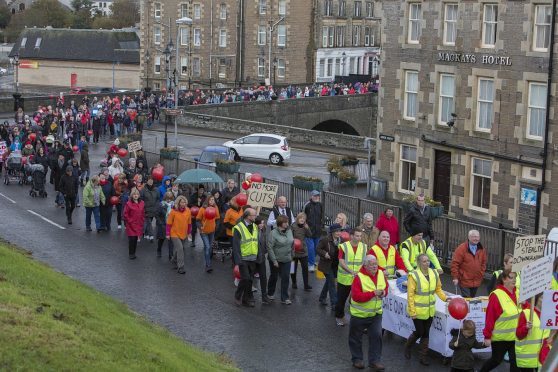Only one in five expectant mothers were able to give birth in the north Highlands last year – with 80% sent on a 100-mile trip to Inverness.
New figures reveal a huge drop in the number of women having their babies in Caithness following the introduction of controversial restrictions.
In previous years, about two-thirds of mums in the region were able give birth at Caithness General Hospital in Wick.
But in 2015, NHS Highland lowered the threshold for sending expectant mothers to Raigmore Hospital after the “potentially avoidable” death of a baby girl from the e.coli sepsis infection just 40 hours after being born in Wick.
A review into the case has paved the way for a continuation of the restrictions – branded a “downgrade” by campaigners – with maternity services at Wick to be officially changed within weeks from consultant-led to being run by midwives.
The shake-up has been questioned after a series of alarming cases emerged in recent months as more and more mums had to make the 100-mile journey from Caithness to Inverness.
Figures obtained from NHS Highland by campaign group Caithness Health Action Team (Chat) have now revealed just how many mothers are having to travel to Raigmore.
Between January and November last year, 156 mums from Caithness had their babies in Inverness, including almost all first-time mothers, compared to just 37 who gave birth in Wick.
The figures compare to 162 births at Caithness General out of a total from the area of 264 in 2014/15, as well as 161 out of 254 in 2013/14, and 182 out of 275 in 2012/13.
Chat secretary Nicola Sinclair said: “It’s very disappointing because there’s the additional inconvenience, at a particularly important and vulnerable time of your life, to be sent 100 miles away from family and networks.
“There’s the practical inconvenience because of transport and accommodation, but most importantly there’s the increased physical risk.
“Cases such as Eilidh McIntosh show that the infrastructure isn’t coping.”
Local councillor Bill Fernie, who is chairman of Chat, added: “Way back for decades and decades we’ve always managed to give birth in Caithness, but now we’ve moved to a situation where that is not the case for most people.
“I think that is really difficult for people here to swallow.”
The figures emerged the day after the health board announced that it was fast-tracking the move to a midwife-led maternity unit in Caithness, with midwives to be on-call overnight from January 30.
An NHS Highland spokesman said: “The reduction in birth numbers is due to the change in clinical criteria for local birth, which is based on supporting the safest outcome for women and babies.
“Throughout 2016 and while awaiting outcome of the Public Health Review, the Caithness unit has been working to the same clinical criteria and risk assessment as that of a midwife-led Community Maternity Unit (CMU), in addition to this all first time mothers have been advised to give birth in Raigmore Maternity.
“The latter has since been reviewed and in line with other CMUs, low risk first time mothers will fit the criteria for local birth in Henderson Wing, this will be in place following transition to CMU at the end of March.”
Highlands and Islands Labour MSP Rhoda Grant said maternity services needed to improved last night.
“The change to a mid-wife led maternity unit was an extremely difficult decision for all concerned,” she said.
“However, everyone agrees that the service has to be as safe as possible for mother and child and it must also be centred around the needs of mums and their families.
“It is difficult for a non-medical person to interpret the figures as there could be many factors involved.
“However they highlight the need for more facilities in Inverness for Caithness mothers.
“For example, free accommodation around Raigmore for them, their partners and families given the distance from home.”










